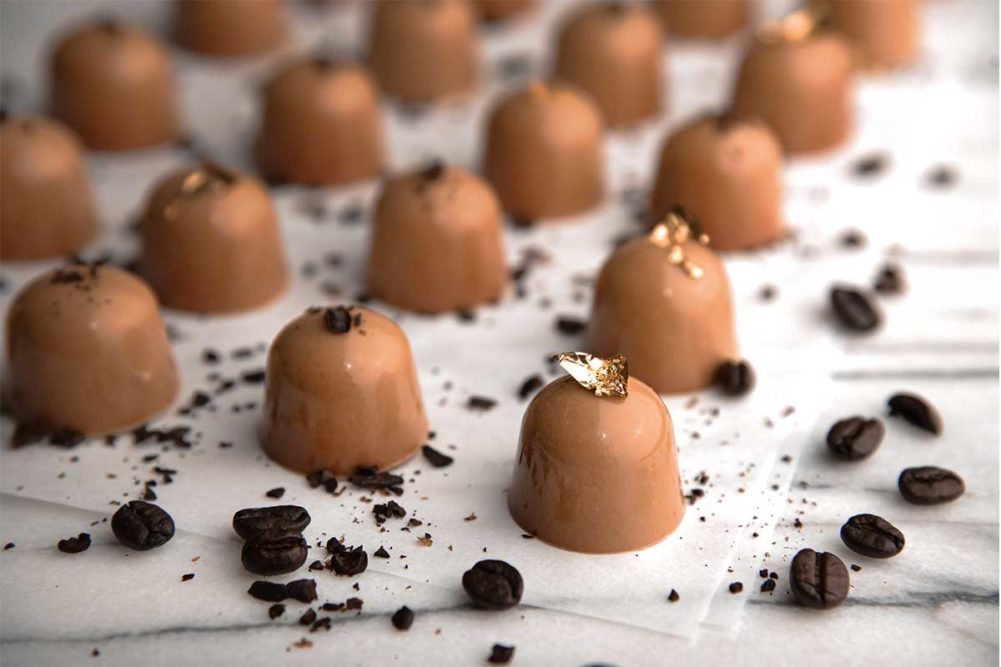The decision about whether to add white, milk or dark chocolate is usually dependent on consumer preference. White chocolate is creamy, smooth and sweet, milk chocolate is sweet and milky, and dark chocolate has more bitter notes. However, dark chocolate has a healthy halo that appeals to health-conscious consumers, so it’s a good fit in the better-for-you (BFY) categories.
“The challenges are that they melt differently, and they all don’t set up quite the same due to the varying ratio of fat, cocoa solids and sugar,” says An Ho, director of research and development at IFPC. “If you need to substitute one for another, then your whole formula will need to be adjusted to offset the differences in fat and sugar.”
Depending upon your formulation, the chocolate you choose can help balance out flavors, says Gretchen Hadden, marketing manager, cocoa and chocolate, Cargill.
“If your application includes a sweet ingredient such as caramel, opting for a dark chocolate that holds a more bitter profile could help balance out the sweetness,” she notes. “If you’re looking to create a classic salty-and-sweet combo, milk or white chocolate — both of which are inherently sweeter — would be a great choice.”
Appearance is another factor in choosing the right chocolate for an application.
“A combination of dark and white chocolate can, for example, create a nice visual effect,” says Mark Adriaenssens, vice president of research and development, Barry Callebaut. “If chocolate has to be baked, then dark chocolate resists the baking best whereas white chocolate can color/caramelize a bit due to the baking process.”
Chocolate is often used to mask bitter flavors in BFY products that are high in fiber or protein.
“Good masking doesn’t necessarily mean ‘hiding,’” says Wouter Stomph, head of ingredient development and innovation for North America, Olam Cocoa. “Some of the best successes in working with off and/or strong flavors are when we find synergies. For example, high intensity sweeteners can have bitter and lingering aftertastes. Cocoa powders have a natural bitterness that can mute the bitterness coming from the sweetener.”
Chocolate’s strong flavor can make a variety of ingredients more palatable.
“Chocolate can pair well with high proteins and also with higher fibers,” Adriaenssens says. “Though it has limitations because if you use too much protein, the taste will become too cardboard-like or dry; the same is true for fiber content that is too high.”
Whether they are looking for smooth and sweet white or milk chocolate or the kick of a bitter dark chocolate, there are dozens of ways that bakers can incorporate chocolate into their baked foods. Whatever they are trying to accomplish, there’s a chocolate for that.





